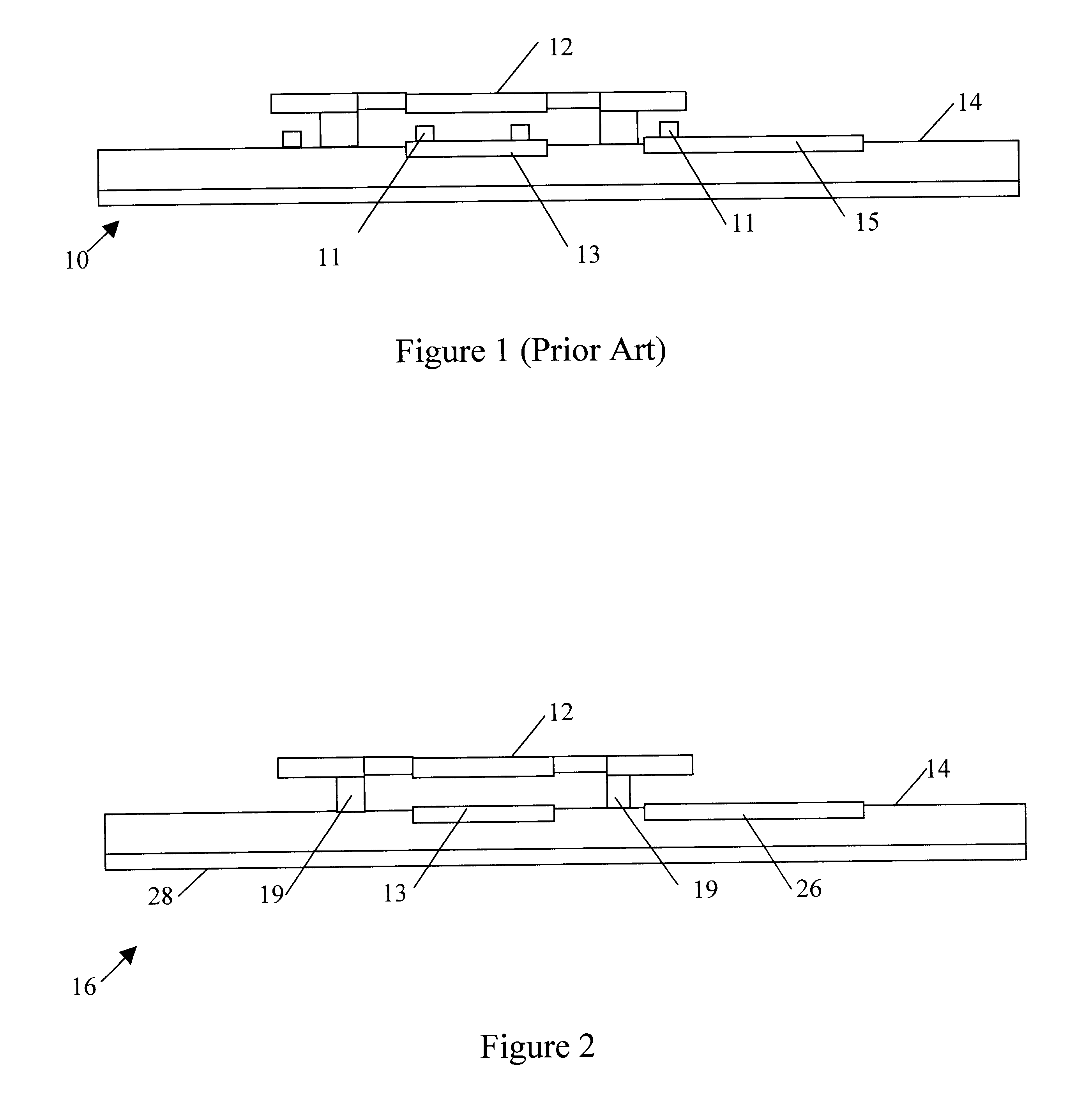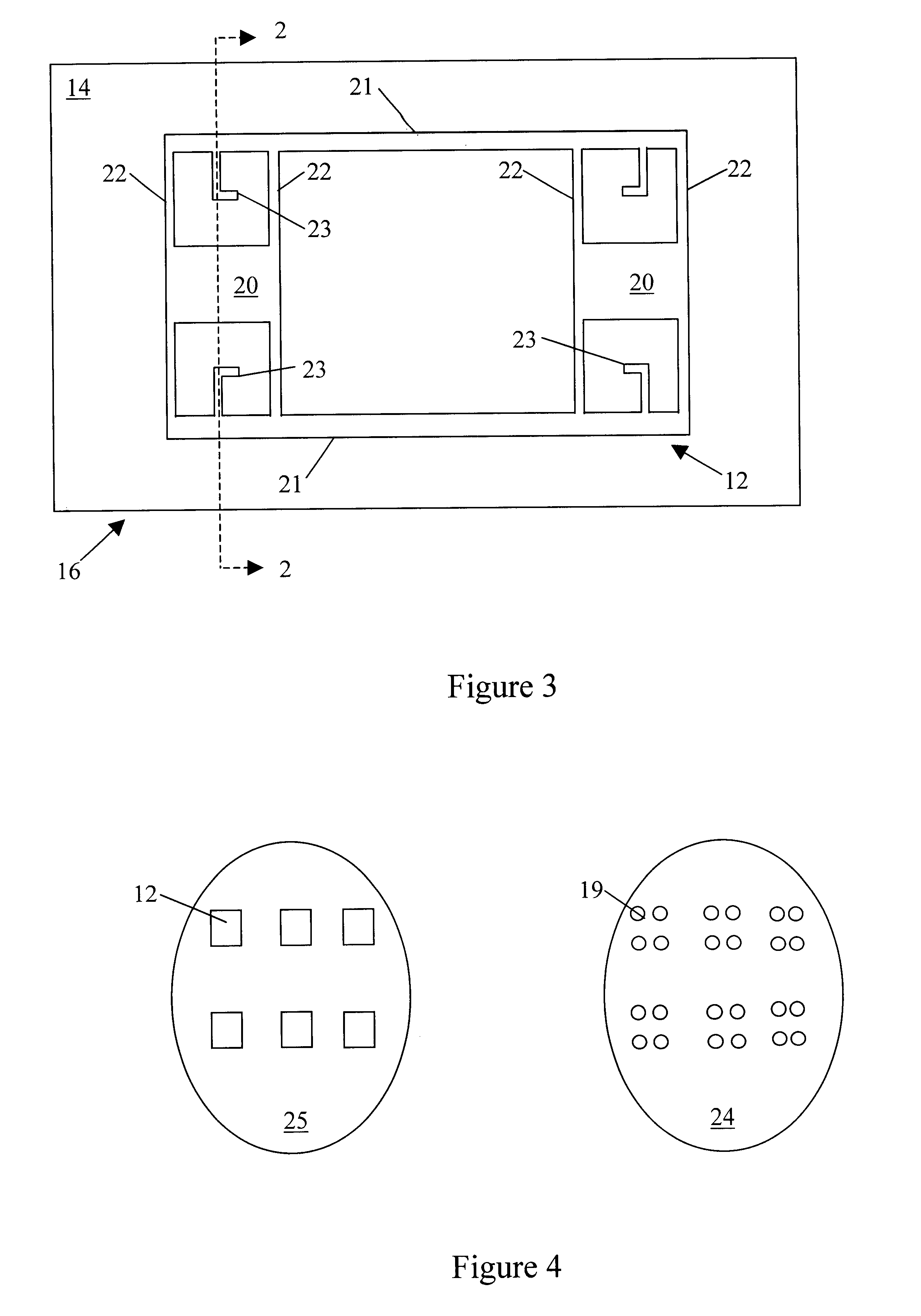Microelectromechanical device manufacturing process
a manufacturing process and electromechanical technology, applied in the field of micro electromechanical systems (mems) devices, can solve the problems of significant environmental and manufacturing problems, significant volume of solvent is required to completely submerge the composite structure, and corrosive fumes are generated
- Summary
- Abstract
- Description
- Claims
- Application Information
AI Technical Summary
Benefits of technology
Problems solved by technology
Method used
Image
Examples
Embodiment Construction
The present invention provides a method for manufacturing a MEMS device. In the following description, various MEMS devices are shown although it will be apparent to one of ordinary skill in the art that the present invention may be practiced without the specific structural or circuit details disclosed herein. In other instances, well known techniques or structural elements have not been shown in detail in order not to unnecessarily obscure the present invention. The present invention provides a method for the manufacture of MEMS devices with improved control of the manufacturing process. Advantageously, the present invention eliminates stiction forces that tend to cause MEMS structural elements to permanently adhere to the glass substrate as a result of the manufacturing process. The present invention also permits the efficient utilization of toxic etchant so as to minimize the risk posed to people and the environment.
A representative illustration of a prior art MEMS device 10 manu...
PUM
| Property | Measurement | Unit |
|---|---|---|
| thick | aaaaa | aaaaa |
| thickness | aaaaa | aaaaa |
| opacity | aaaaa | aaaaa |
Abstract
Description
Claims
Application Information
 Login to View More
Login to View More - R&D
- Intellectual Property
- Life Sciences
- Materials
- Tech Scout
- Unparalleled Data Quality
- Higher Quality Content
- 60% Fewer Hallucinations
Browse by: Latest US Patents, China's latest patents, Technical Efficacy Thesaurus, Application Domain, Technology Topic, Popular Technical Reports.
© 2025 PatSnap. All rights reserved.Legal|Privacy policy|Modern Slavery Act Transparency Statement|Sitemap|About US| Contact US: help@patsnap.com



